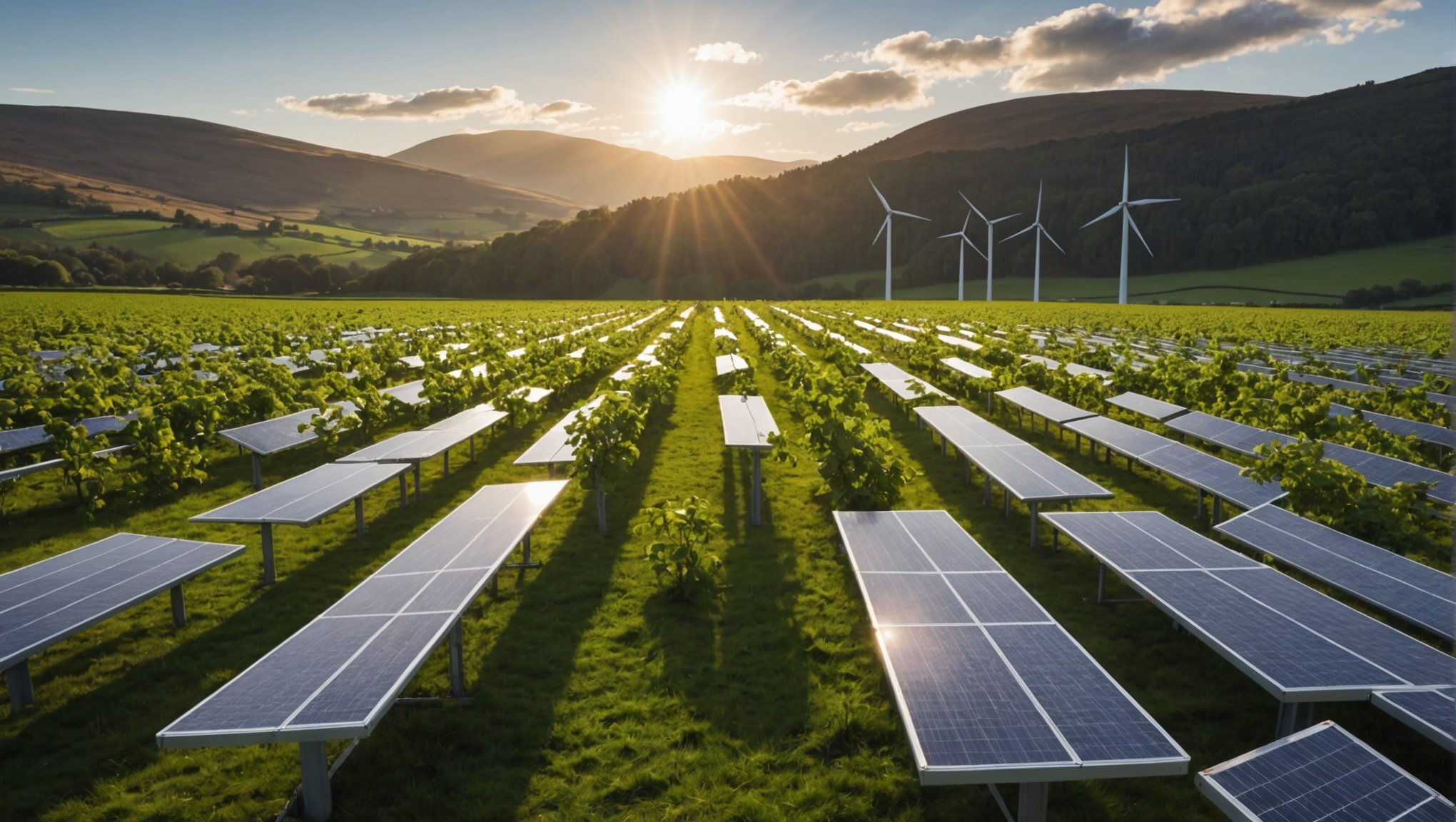Overview of Renewable Energy Subsidies in the UK
Since the early 2000s, the UK government has encouraged renewable energy through significant financial incentives. This proactive approach began in response to environmental concerns and a desire to reduce reliance on fossil fuels. Key government policies, such as the introduction of Feed-in Tariffs (FITs) and the Renewable Heat Incentive (RHI), demonstrate commitment to these objectives.
FITs were launched to promote energy creation from renewable resources like wind and solar power. Under this scheme, homeowners and businesses received payments for generating their own electricity, amplifying the incentive. Meanwhile, the RHI scheme offered financial benefits to those implementing renewable heating systems, like solar thermal panels or heat pumps, encouraging widespread adoption.
Also to see : Exploring the Influence of Microsatellite Technology on Maritime Surveillance in the UK
Notably, the Contracts for Difference (CfD) scheme has emerged as an essential tool. It aims to stabilise revenues for renewable energy projects by guaranteeing set prices, thus ensuring financial viability for stakeholders.
Overall, the allocation of financial incentives has strategically bolstered the UK’s renewable energy sector. By underpinning economic feasibility and fostering sustainable practices, the UK’s subsidies have played a pivotal role in advancing renewable energy infrastructure. This systemic approach not only addresses current energy needs but also sets a groundwork for a sustainable future.
Also to discover : Transforming Healthcare: The Impact of Wearable Technology on Patient Monitoring in the UK
Economic Impacts of Renewable Energy Subsidies
Economic growth often benefits significantly from renewable energy investments. The link between these investments and GDP impact is crucial, as they can boost local economies by generating jobs and fostering innovation. Studies show that regions investing in renewable energy frequently experience enhanced financial stability.
Subsidies play a vital role in the overall economic performance by reducing the initial costs of setting up renewable energy projects. These financial aids help create a favourable environment for investments, thus contributing to the expansion of the economy. The relationship between financial implications and growth is evident as subsidies make cleaner energy options more competitive against traditional energy sources.
Examining specific regions provides valuable insights into these dynamics. For instance, countries that have proactively implemented subsidies tend to report a positive GDP impact due to the influx of renewable investment. In turn, this attracts further technological development and promotes sustainable economic practices. By supporting renewables, economies can achieve sustainable growth, showcasing the potential long-term benefits of subsidies. Contrarily, regions without these incentives might lag, underlining the importance of strategically aligning economic policies with sustainability objectives.
Job Creation and Employment Opportunities
The renewable energy sector has become a powerhouse for job creation, significantly influencing employment growth across various regions. Subsidies for this industry have catalysed job creation by lowering entry barriers for startups and encouraging innovation. Numerous financial incentives have propelled employment rates within the renewable sphere, starkly contrasting with the stagnancy seen in non-renewable sectors.
In terms of employment growth, the renewable industry outpaces non-renewable resources. Whereas traditional energy sectors face challenges like resource depletion and environmental restrictions, renewable energy offers a more sustainable pathway. As a result, many companies are moving towards green alternatives, further bolstering job opportunities.
Long-term job sustainability in the renewable energy sector is promising due to its alignment with global environmental goals. Alongside this, there’s a significant emphasis on skill development, ensuring that the workforce is well-equipped with the necessary expertise. Training programs are increasingly focusing on equipping professionals with skills tailored for renewable technologies, ensuring future-proof employment.
This translates into resilience and adaptability in the job market, with employees constantly upgrading their skills in a rapidly evolving industry. Thus, the renewable sector not only offers new roles but also supports sustainable growth in employment.
Investment Trends in Renewable Energy
The renewable energy sector is experiencing dynamic investment patterns, with significant involvement from both public and private sectors. The rapid growth in this industry has caught the eye of numerous investors eager to support sustainable initiatives. Interestingly, market trends show a shift towards more private sector participation in renewables, motivated by advancements in technology and pressing environmental concerns.
Public investments, often backed by various government subsidies and incentives, have traditionally spearheaded developments in renewable energy. These subsidies not only help in pioneering technological innovations but also play a crucial role in luring foreign investments. By reducing the financial risks associated with renewable projects, subsidies make the sector more attractive to international investors, eager to partake in this sustainable endeavor.
Private sector involvement is paramount, as it complements the efforts of public investments. The influx of venture capital and corporate financing into green technologies highlights a belief in their long-term profitability. As a result, the sector is projected to witness considerable investment growth in the coming years. Analysts foresee an escalation in funding for renewables, driven by evolving market dynamics and the global transition towards eco-friendly alternatives.
Effects on Energy Prices
Subsidies play a significant role in shaping energy costs and market prices. Consumers often witness a noticeable difference in pricing between subsidy-supported and traditional energy sectors. By lowering the cost of production, subsidies can reduce energy costs for consumers, providing them with more affordable options. This can influence market prices dynamically.
In subsidy-supported sectors, the energy market prices tend to be lower compared to traditional sectors. This is primarily because subsidies help offset production costs, easing the financial burden on companies. In turn, these companies can pass on the savings to consumers, reducing their overall expenses.
The impact on energy costs can vary in the short term versus the long term. Initially, subsidies may cause a decline in prices, offering immediate relief to consumers. However, as the market adjusts, these benefits might fluctuate. Over time, the reliance on subsidies could potentially affect market stability and lead to alterations in how energy prices are set.
Understanding these dynamics is crucial for consumers seeking to navigate the evolving energy landscape. By being informed, they can better anticipate changes in energy costs and make strategic decisions regarding their consumption.
Policy Effectiveness and International Comparisons
The effectiveness of subsidies in the UK’s renewable energy policies serves as a crucial measure when evaluating progress toward sustainability goals. Over recent years, subsidies have played a pivotal role in promoting renewable technologies, such as wind and solar power. Achievements include increased capacity and reduced carbon emissions.
International comparisons provide valuable insights into these policies. Countries like Germany and Denmark have implemented notable subsidy initiatives, directly influencing their energy mix. For instance, Germany’s Energiewende has stimulated its renewable sector significantly, supporting advancements in green technology and job creation. Meanwhile, Denmark’s focus on wind energy has set global benchmarks.
Lessons learned from these international case studies are plentiful. Primarily, consistency in policy implementation and clear strategic goals are vital for success. Planning that aligns with environmental, economic, and social objectives enhances the effectiveness of subsidies. Additionally, continuously updating policies to reflect technological progress and market changes ensures that investments yield maximum benefits.
Recognizing the broader context when analysing these subsidies helps shape effective strategies. Policymakers can draw on international experiences to refine their approaches, ultimately incentivising technological development and fostering a sustainable energy transition.
Challenges and Criticisms of Renewable Energy Subsidies
While renewable energy subsidies are instrumental in promoting clean energy initiatives, several criticisms and challenges have emerged. Critics argue that subsidies might lead to market distortions, which can hinder innovation by creating dependencies on financial support rather than encouraging competitiveness. There is a concern that this could result in inefficiencies and a lack of motivation to develop cost-effective renewable technologies.
Sustainability issues are another key area of contention. The environmental impact of producing and disposing of equipment associated with renewable energy, such as solar panels and wind turbines, raises questions about the true sustainability of these technologies. Critics worry that the focus on renewables could inadvertently contribute to pollution if not managed responsibly, counteracting their intended environmental benefits.
From an economic standpoint, renewable energy subsidies might present challenges as well. Policies supporting subsidies could increase fiscal burdens, potentially leading to higher taxes or public debt. Additionally, there is an argument that subsidies provide an unfair advantage over traditional energy sources, possibly disrupting jobs in fossil fuel sectors without offering comparable opportunities in the renewables industry. Hence, balancing these economic considerations is crucial to creating a sustainable subsidy framework.






